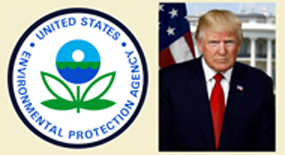The Trump Administration is clearly hungry for regulatory reform that reduces the cost and process burden of environmental regulation. Those who see a fundamental conflict between environmental protection and economic development welcome this development, as do those concerned that environmental requirements have become so extensive, detailed, and layered as to make compliance an elusive pursuit. Conversely, the shift raises concerns for those who see environmental protection and economic development as fully compatible goals and who fear environmental backsliding.
Our environmental programs have unquestionably improved our environment, and the environmental laws of the United States, which have been formulated and enforced by Administrations both Republican and Democrat, are the envy of the world. But viewing our approach to environmental protection in its current form as perfect is a mistake. Our programs are predicated on assumptions and modalities that are several decades old and could benefit greatly from being modernized and recalibrated to current realities.
Conversely, viewing these programs as fundamentally flawed is also a mistake. Efforts to unwind our environmental laws and the regulations that facilitate them are a perilous endeavor. There are babies in this bathwater – structural dimensions that have made a difference between environmental success and failure – that must be understood and protected.
Good environmental govern ance and the rule of law means that all sectors of society are accountable for environmental responsibilities established by law, including federal and state officials and emitting enterprises. As compared with the experience of other countries around the world, our current system has done a pretty good job with environmental accountability. This is partly because of government enforcement, partly because of transparency measures that have caused companies to face – and reduce – their pollution footprint, and partly because of the rights given citizens to hold the system to account when the government falls short. Working together, these elements have served to prod the federal government forward, helped ensure that states maintain a nationally consistent baseline of protection, and ushered in a culture of compliance among industry and others. The net result: vast improvements in environmental quality.
ance and the rule of law means that all sectors of society are accountable for environmental responsibilities established by law, including federal and state officials and emitting enterprises. As compared with the experience of other countries around the world, our current system has done a pretty good job with environmental accountability. This is partly because of government enforcement, partly because of transparency measures that have caused companies to face – and reduce – their pollution footprint, and partly because of the rights given citizens to hold the system to account when the government falls short. Working together, these elements have served to prod the federal government forward, helped ensure that states maintain a nationally consistent baseline of protection, and ushered in a culture of compliance among industry and others. The net result: vast improvements in environmental quality.
Accountability under the law does not come easily. Indeed, inadequate enforcement is the number-one reason most other countries are failing to get on top of their environmental problems. There is a slippery slope here – even for us. The basic elements of our accountability model are extremely sensitive to change, and too hard of a tug on any one of these threads could cause a rather valuable garment to begin to unravel, with consequences for environmental quality and public health.
We’ve seen a steady decline in enforcement resources at EPA, including a 15% reduction during the Obama Administration. President Trump proposes to further reduce EPA’s budget for federal enforcement by a whopping 24%. The federal backstop is shrinking. Some states may find themselves struggling to stand firm if the threat of federal intervention begins to disappear. The federal backstop has helped states make tough, protective decisions in the face of often fierce local political pressures. Decreasing federal enforcement may lead to a similar decrease at the state level, which may at some point begin to influence compliance choices within the regulated community.
This is not to say that states shouldn’t be given further deference in these programs. A modernized approach to environmental protection should take increased capacity at the state level into account – for sure – especially in the context of programs that do not have major interstate dimensions. But then there is the question of resources. Pass-through grants from EPA still account for 25% of states’ environmental program budgets on the whole. Surprisingly, the Trump Administration also proposes a huge cut to these funds – nearly 50%. The takeaway is that the Administration appears to be proposing not just a redistribution of responsibility between the federal government and the states, but a reduction in the overall environmental accountability model.
The accountability model matters – and for reasons beyond the environment. Properly executed, environmental accountability facilitates commerce. The U.S. business community has made enormous progress incorporating environmental responsibility into its core business model, and the consistency in regulatory expectations and accountability is an important normalizing force in the market, particularly when new actors are always entering. And, of course, public confidence that public health guarantees are being delivered rides heavily on the perception of accountability.
In the policy and budget debates ahead, it will be critical to protect the important checks and balances that support effective governance and rule of law in the environmental arena. While the current system doesn’t always work perfectly and may be dated, it can be modernized without changing the environmental bottom line or compromising the gains that we as a nation have so painstakingly made.
